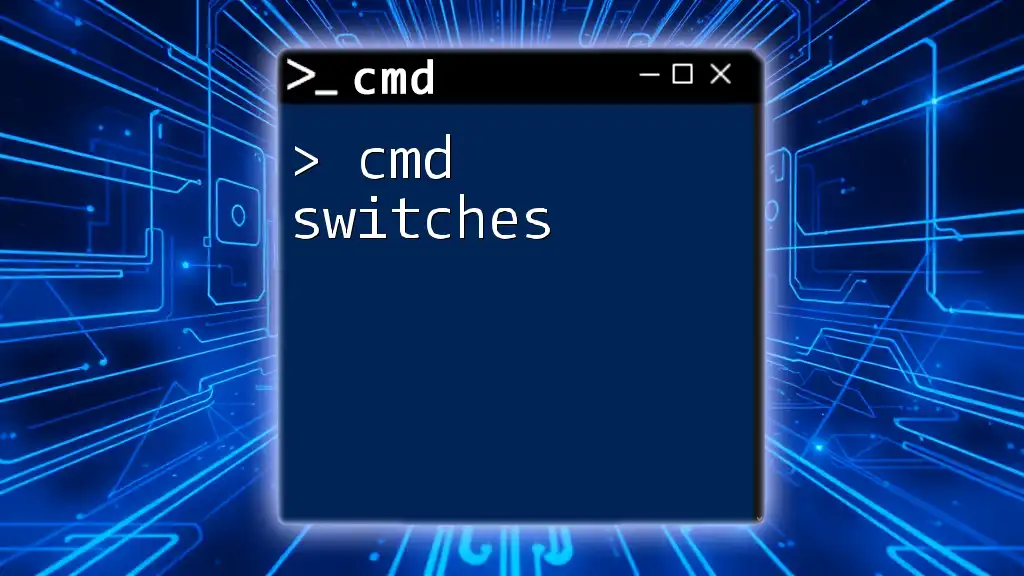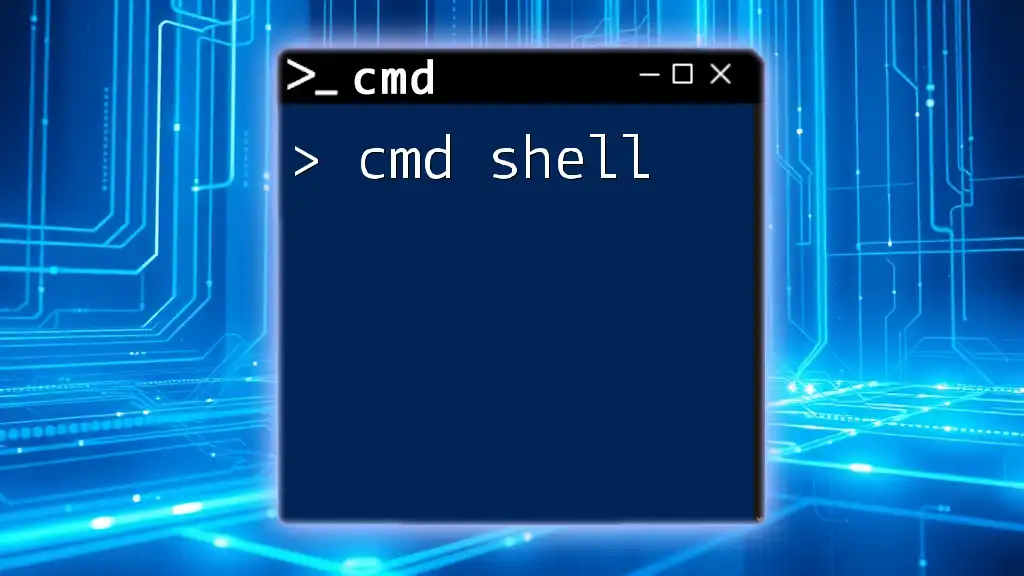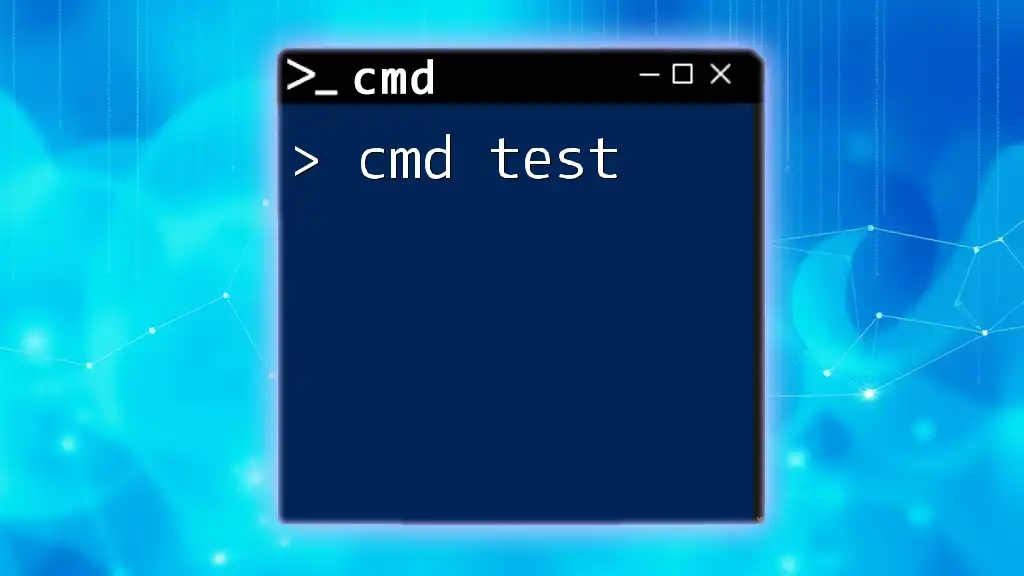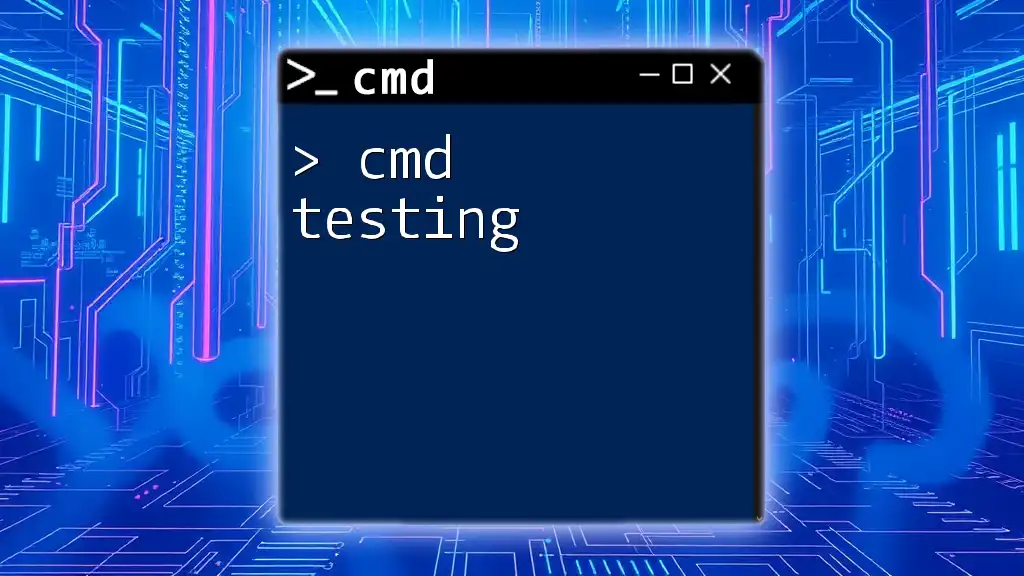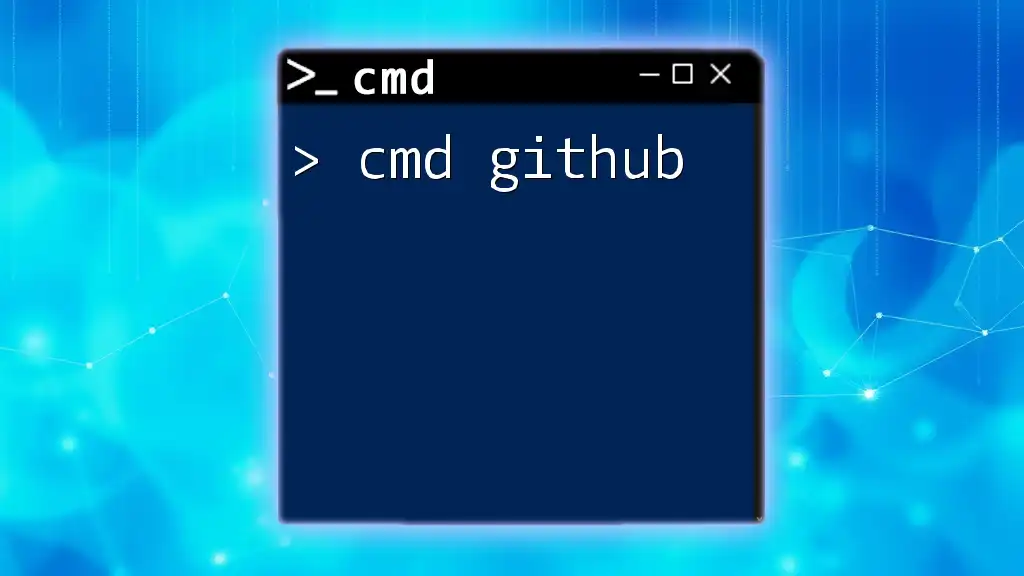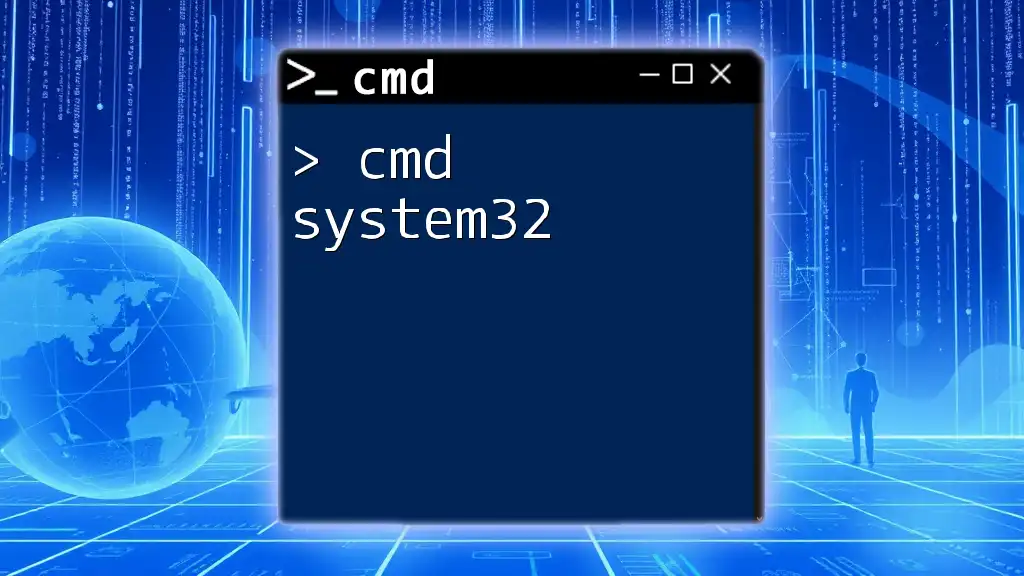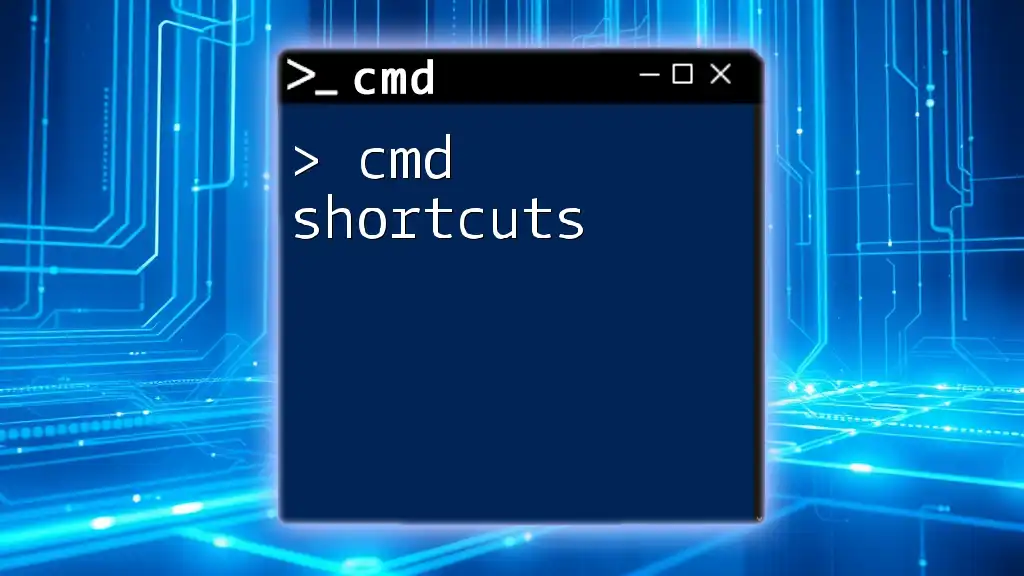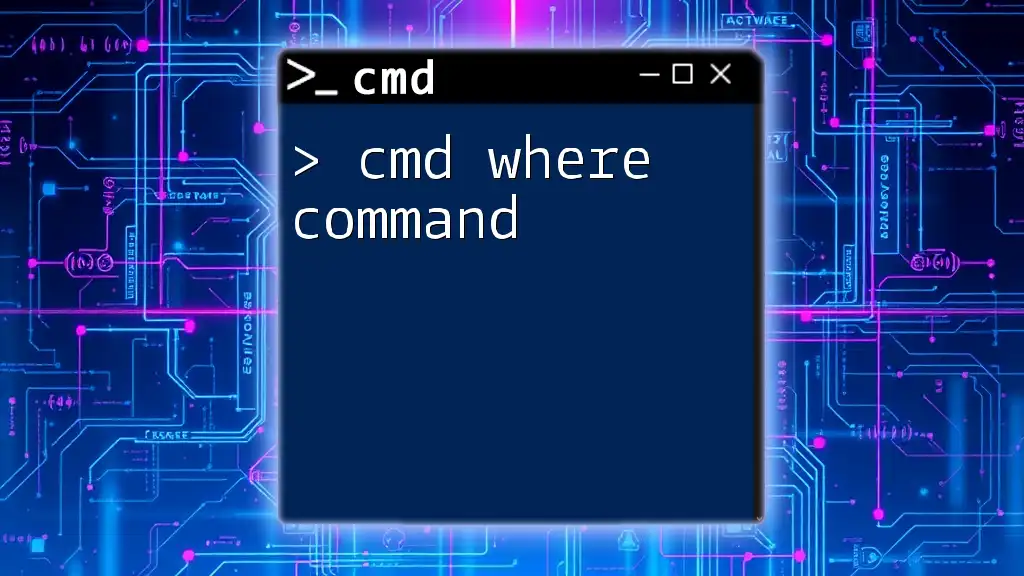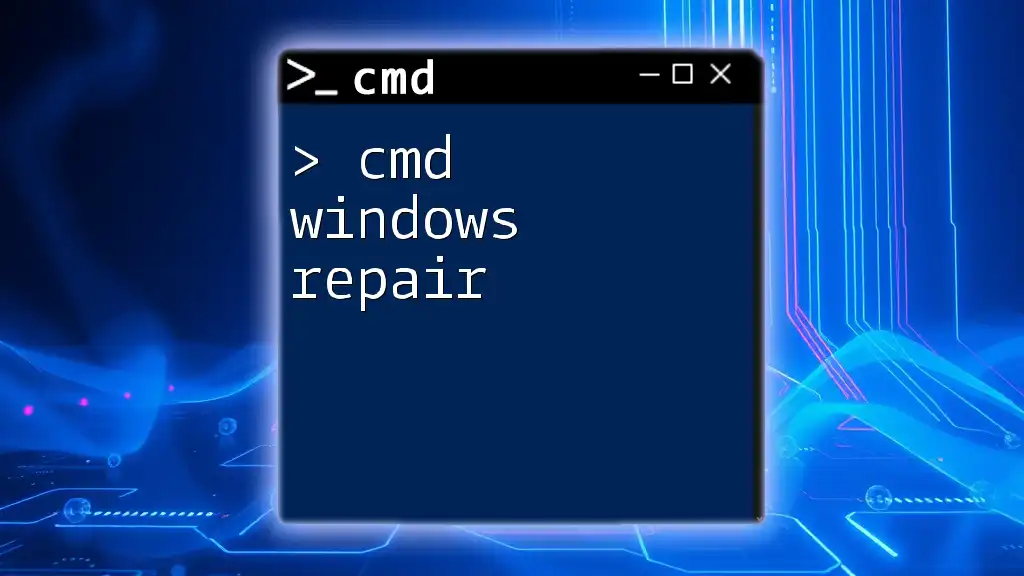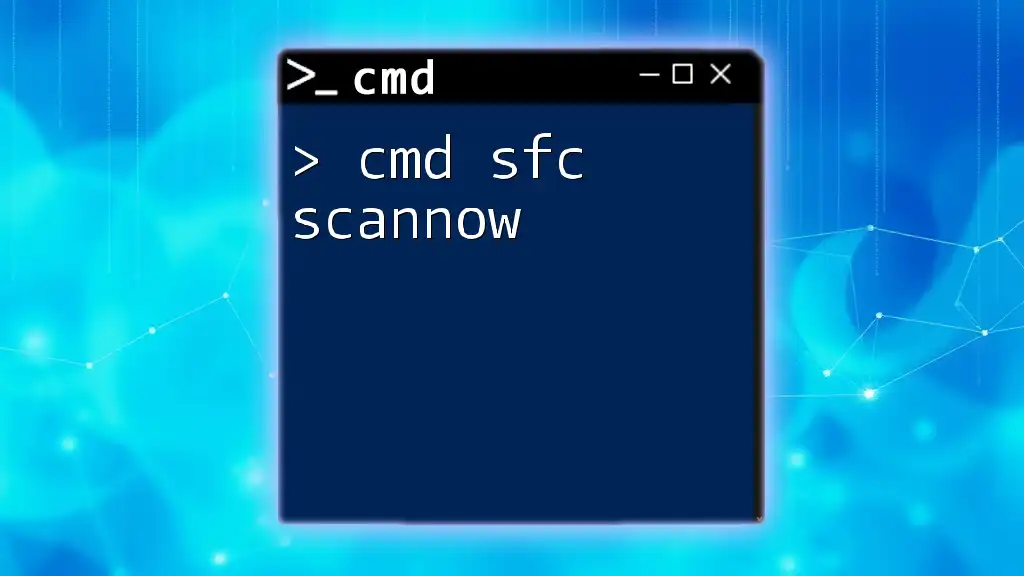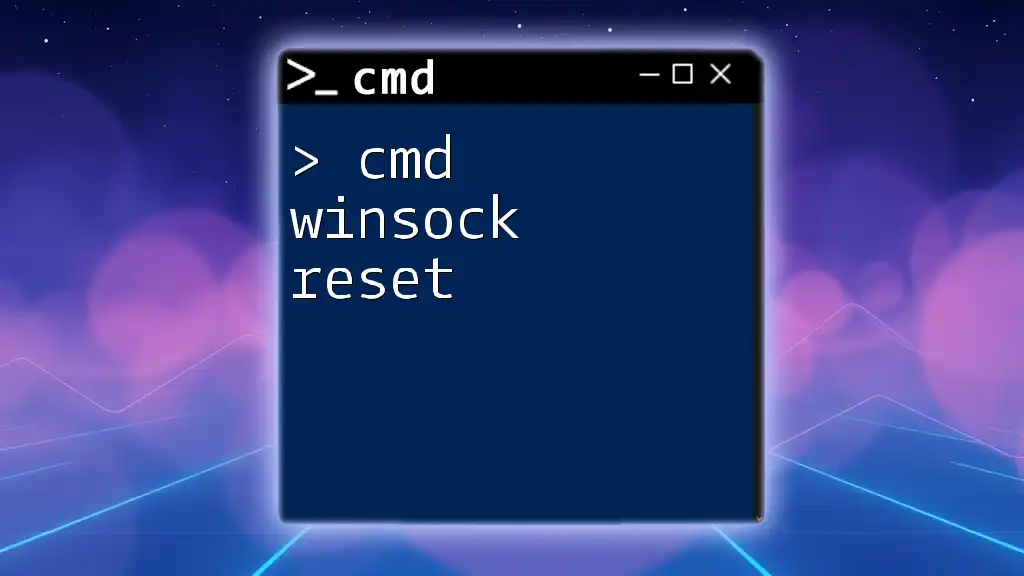CMD switches are optional parameters that modify the behavior of command-line commands in Windows Command Prompt, allowing users to customize their commands for specific tasks.
Here's a code snippet demonstrating the use of a CMD switch:
dir /w
In this example, the `/w` switch displays the directory listing in a wide format.
Understanding CMD Commands and Switches
What are CMD Commands?
CMD commands, short for Command Prompt commands, allow users to interact with the Windows operating system through a text-based interface. Unlike graphical user interfaces, CMD provides a way to execute a wide range of tasks using specific commands typed in a command line format. CMD commands are powerful tools for system management, file operations, and troubleshooting, offering an efficient way to control and automate tasks in Windows environments.
What are Switches?
In the realm of CMD commands, switches are additional arguments that modify the behavior of the command, allowing for refined operations. A switch typically comes in the form of a forward slash (/) followed by a letter or word, and serves to enable specific features or functions dictated by the given command.
It’s essential to distinguish between switches and regular command parameters. While parameters are generally the subjects (like file paths or filenames) that a command operates on, switches alter how the command executes or what options are available during that execution. For instance, when executing the `dir` command to list directory contents, using `/W` switch would format the output more compactly, affecting the way the results are displayed.
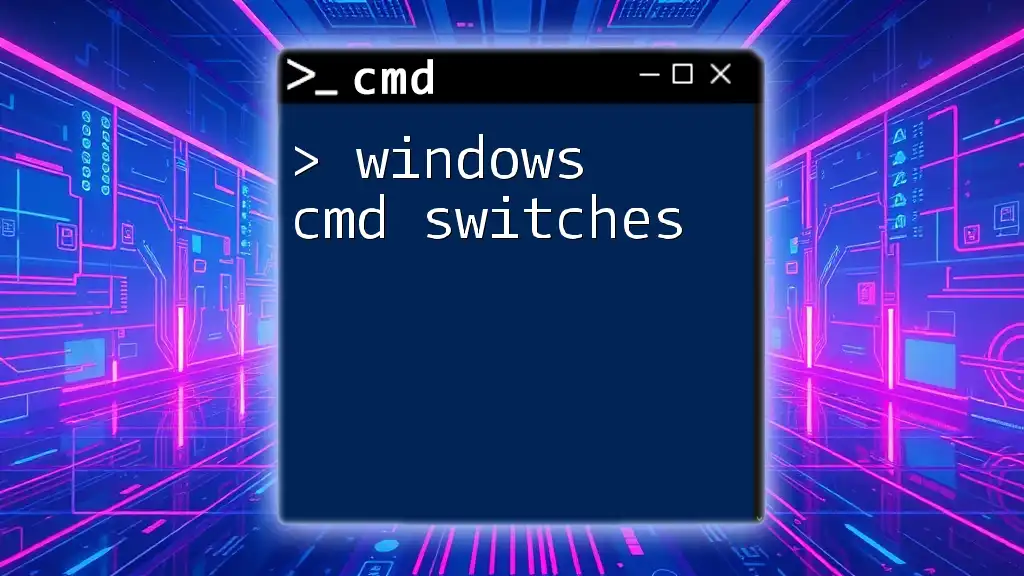
Types of CMD Switches
Common CMD Switches
Familiarity with some common CMD switches can greatly enhance your ability to efficiently use command line operations:
-
/S: This switch is often used with commands such as `del`, `copy`, or `xcopy` to specify that the command should include all subdirectories in the operation.
-
/C: Commonly used with the `cmd` command, `/C` tells the command processor to execute a specific command and then terminate. For example:
cmd /C dir -
/K: The opposite of `/C`, using `/K` means that after executing a command, the command prompt remains open. This is essential for users who wish to observe the results of their command before exiting.
Understanding Mandatory vs. Optional Switches
Switches can be categorized into mandatory and optional:
-
Mandatory switches are essential for proper command execution. Certain commands will not run without these switches, and errors will occur if they are omitted.
-
Optional switches, on the other hand, enhance the command’s functionality but are not necessary for the command to execute. It’s important to read the command help documentation to understand which switches fall into each category.
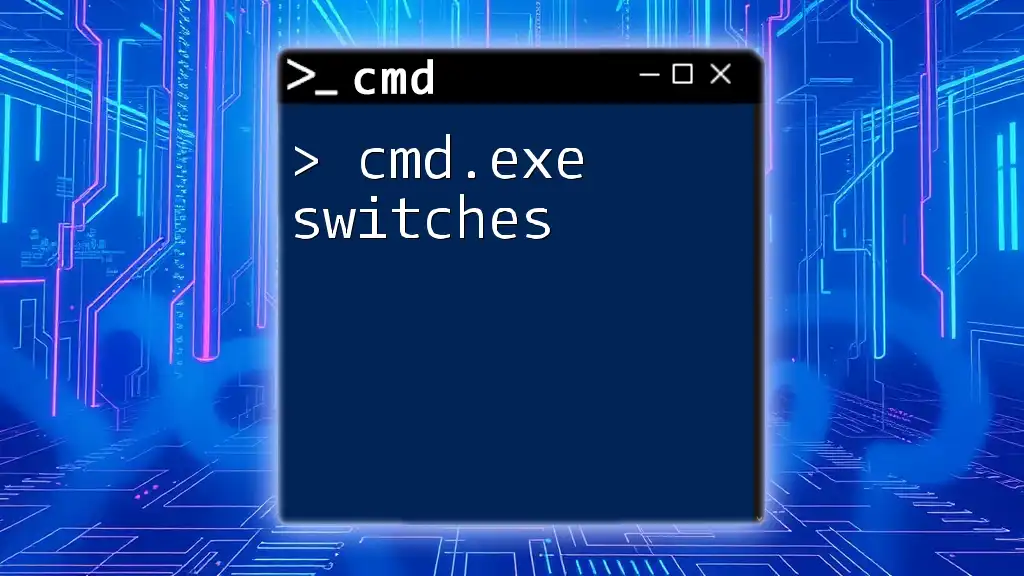
How to Use CMD Switches
General Syntax of CMD Commands with Switches
To use CMD switches correctly, it’s crucial to comprehend the general syntax format:
command [switches] [parameters]
For instance, a commonly used command to list files in a directory might look like this:
dir /w /p
In this example, `dir` is the command, `/w` is a switch that formats output in a wide view, and `/p` pauses after each page of output.
Combining Multiple Switches
CMD allows users to combine multiple switches in a single command, enhancing its functionality. When combining switches, it is important to ensure that they are compatible with one another. For example:
xcopy C:\source D:\destination /E /I
In this command, `/E` copies all subdirectories, including the empty ones, while `/I` assumes that the destination is a directory if it does not exist. This combination saves time and reduces errors when working with file operations.
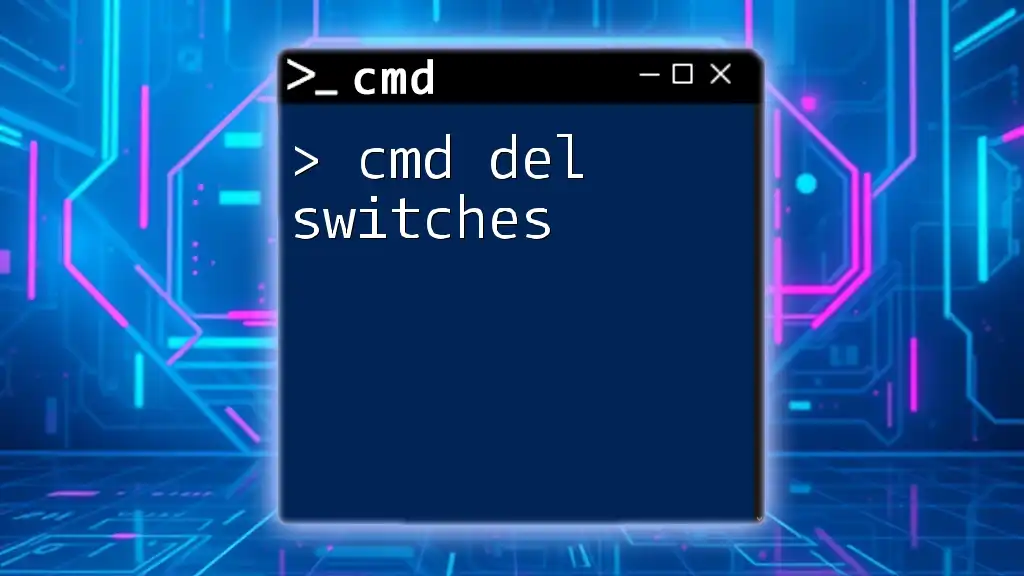
Practical Examples of CMD Switches
File Management with CMD Switches
Copy Command
The `copy` command is frequently utilized for duplicating files. Using the `/Y` switch allows users to overwrite existing files without prompting for confirmation:
copy file.txt D:\backup\file.txt /Y
The above command quickly copies `file.txt` to the backup destination without asking for permission to overwrite if `file.txt` exists in the backup location.
Delete Command
The `del` command combined with the `/F` switch allows for forceful deletion of read-only files:
del readme.txt /F
This command removes `readme.txt` without regard to its read-only attribute, emphasizing the need for caution when using powerful switches like this.
System Information and Command Switches
For users seeking system status, the `systeminfo` command can be incredibly informative. By utilizing switches, you can customize the output. For instance:
systeminfo /S switchname
This command retrieves and displays detailed configurations and setup information, which can help in troubleshooting or system management tasks.
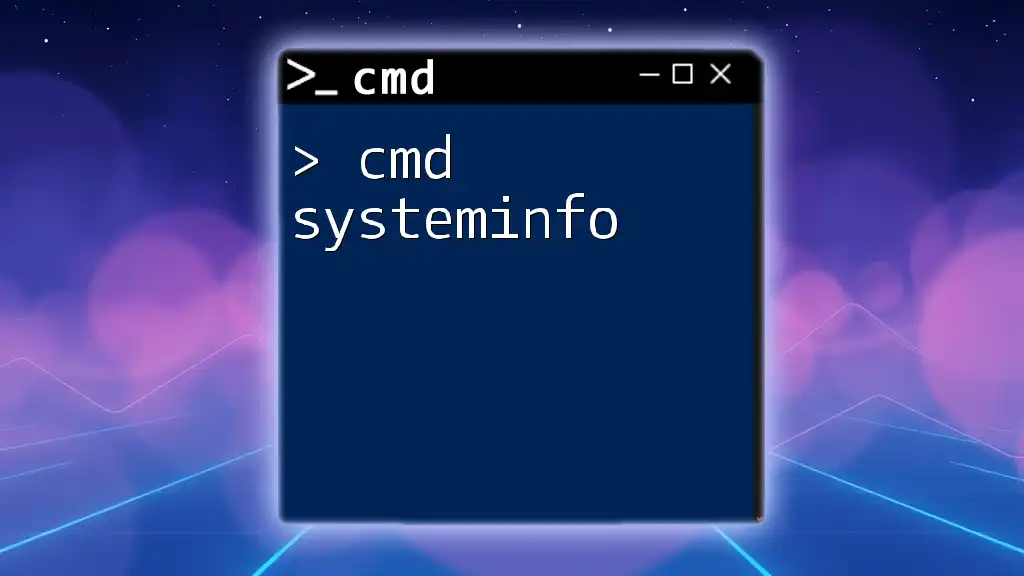
Advanced CMD Switch Techniques
Using Switches for Batch Scripting
CMD also allows for batch scripting, where multiple commands are executed in sequence. Understanding how to utilize switches within these scripts can enhance automation efficiency. A simple example of a batch file utilizing switches is:
@echo off
echo Copying files...
xcopy C:\source D:\destination /E /I
This script echoes a message to the console, informing the user that files are being copied, then proceeds to execute the copy with the specified switches.
Debugging Commands with Switches
Using verbose switches, such as `/V`, during file operations can significantly aid in debugging. Verifying each action taken by a command enables users to track down issues more efficiently. An example would be:
robocopy C:\source D:\destination /E /V
Here, the `/E` switch copies all subdirectories, while `/V` verifies every file after copying, ensuring integrity in the copied data.
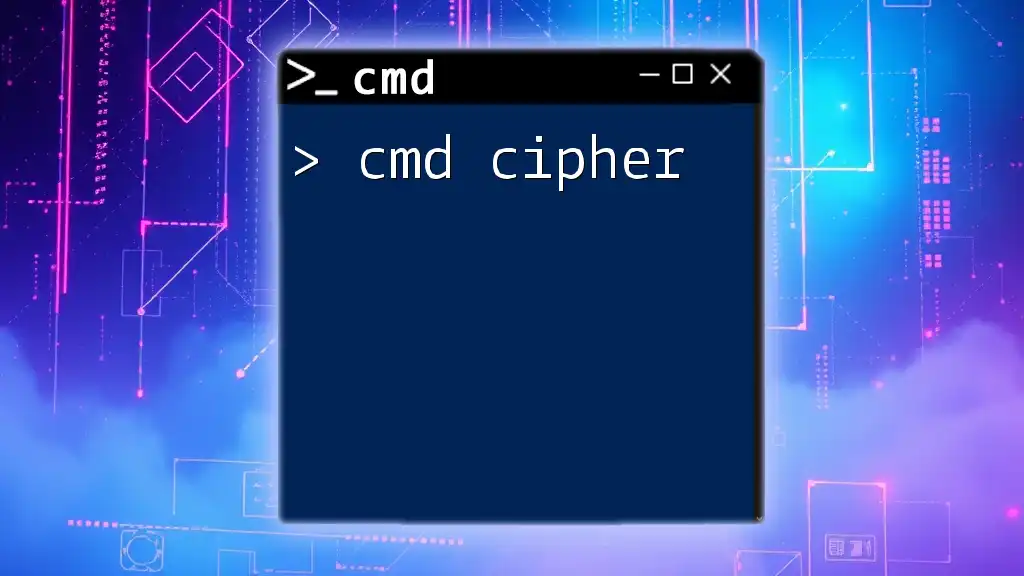
Debugging and Error Handling with CMD Switches
Understanding Error Levels
When working with CMD switches, it’s essential to understand error levels, which indicate the success or failure of a command’s execution. Most CMD commands return specific numerical error levels that hint at what went wrong if a command fails. These can be investigated further for troubleshooting.
Common Error Messages Related to Switches
Often, errors occur simply due to incorrect switch usage. Familiarizing yourself with common error messages can ease troubleshooting:
-
“The syntax of the command is incorrect”: This typically occurs if a required switch is omitted or incorrectly formatted.
-
“Access is denied”: This message may indicate that a particular switch, like `/Y`, cannot be executed due to file permissions. Knowing these common pitfalls will help users navigate CMD more effectively.
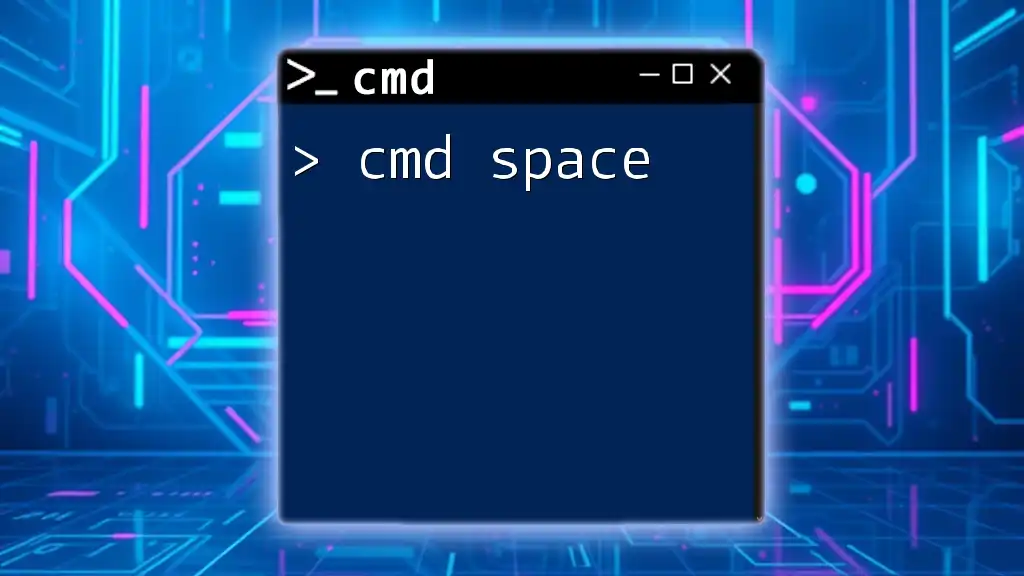
Resources and Tools for CMD Switches
Official Microsoft Documentation
For further learning and detailed understanding, accessing the official Microsoft documentation is invaluable. It provides comprehensive guides and specifics about each command and its switches, which can enhance command line proficiency.
Recommended Tools for CMD Usage
A variety of third-party tools exist that can enhance CMD functionality, making it more user-friendly. These might include command enhancers or tools providing a GUI interface for CMD commands, blending usability and power.
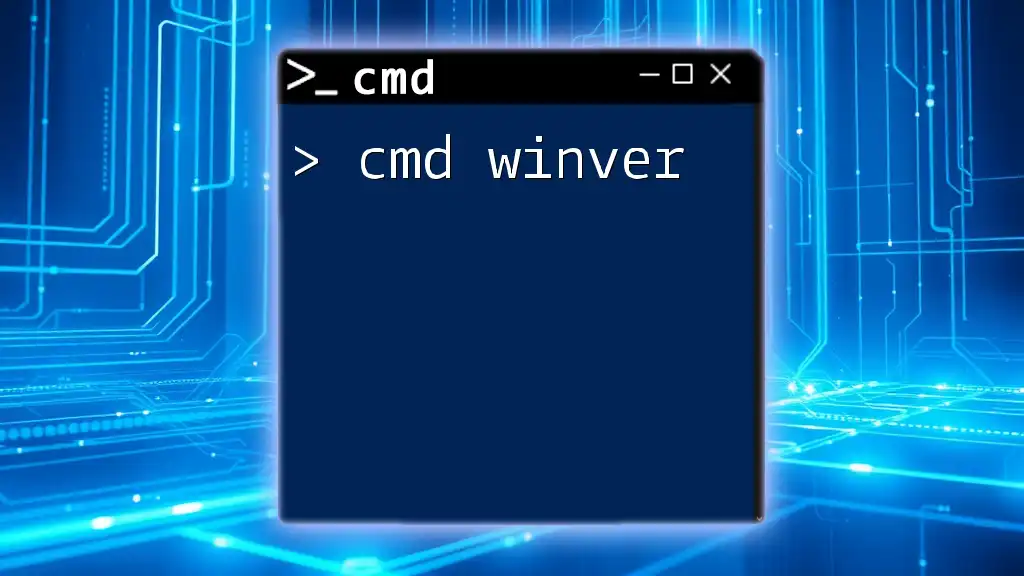
Conclusion
Summary of Key Points
In summary, grasping the concept and applications of CMD switches is crucial for effective command line operations. Switches offer significant opportunities to refine and control command behavior, streamline tasks, and improve overall productivity in Windows environments.
Final Thoughts
Understanding and practicing with CMD switches will bolster your command line skills, leading to improved efficiency in task execution. By delving into the diverse options provided by CMD switches, users can unlock the full potential of the command line.
Call to Action
We encourage readers to share their experiences with CMD switches or pose questions in the comment section. Your insights could help fellow users navigate the command line journey!

